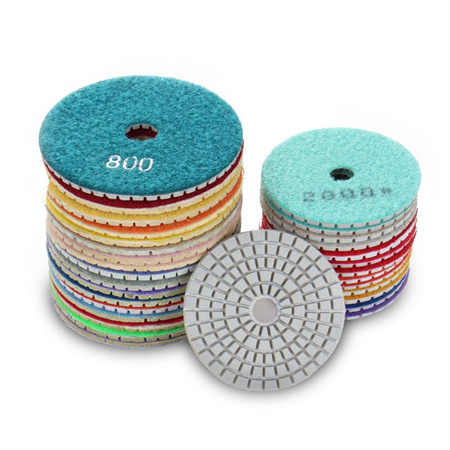Polishing Stone in High-Traffic Commercial Areas
In high-traffic commercial areas, the appearance and durability of floors are vital to making a lasting impression. Whether it’s a bustling shopping mall, a luxury hotel lobby, or an upscale office building, polished stone floors provide the perfect blend of elegance, functionality, and resilience. But what makes stone polishing such an essential choice for these environments, and how does it stand up to the challenges posed by constant foot traffic?

Regular polishing not only enhances the visual appeal of the floor but also extends the lifespan of the stone. Over time, even the hardest stones can accumulate scratches, scuffs, and surface imperfections. A skilled polishing process removes these marks, restoring the floor to its original luster. The use of diamond abrasives during polishing smooths the surface, refining it and filling in any micro-abrasions that may have appeared over time. The result? A gleaming, smooth surface that continues to impress visitors while standing up to the constant pressure of foot traffic.
In high-traffic commercial spaces, a polished stone floor is more than just a luxury—it’s a practical investment. Stone polishing creates a durable surface that resists wear and tear better than most alternatives. In addition, regular maintenance helps to prevent staining. Commercial spaces often deal with spills from food, beverages, and other substances. A polished stone floor is less porous and more resistant to absorbing liquids, which means stains are easier to clean and less likely to set into the surface. This is particularly important in environments like restaurants, hotels, or retail stores where cleanliness and appearance are top priorities.
Another significant benefit of polishing stone in high-traffic areas is the improved safety it offers. Polished stone floors are smoother, which reduces the chances of dirt and debris accumulating in the surface. This is essential in preventing slips, trips, and falls—particularly in commercial settings where large numbers of people move through daily. Moreover, a polished surface makes it easier to maintain a hygienic environment, as it is easier to clean and sanitize compared to untreated or worn surfaces.

The maintenance of stone floors in commercial spaces, however, requires more than just routine sweeping and mopping. In high-traffic areas, it is essential to hire professional stone care experts who understand the nuances of the material. Proper polishing involves a sequence of steps, including cleaning, grinding, honing, and polishing. Each of these stages is designed to address specific issues, such as scratches, stains, or surface dullness.
One of the key factors in achieving a high-quality finish is selecting the right polishing equipment and materials. Diamond abrasives, for example, are often used in the final stages of polishing to provide that mirror-like finish. The quality of the polish depends on the expertise of the technician and the equipment used. This is why investing in professional services rather than relying on DIY methods is often the best choice for maintaining the appearance and longevity of stone floors.

Stone polishing is not just about aesthetics—it’s about creating a lasting, functional, and safe environment for both employees and customers. In high-traffic commercial areas, where first impressions matter, investing in regular stone polishing can help businesses maintain a professional image, extend the life of their floors, and ensure that the space remains both beautiful and practical for years to come. Whether you’re managing a retail space, an office, or any other commercial building, keeping your stone floors polished will continue to offer undeniable benefits that go beyond what meets the eye.